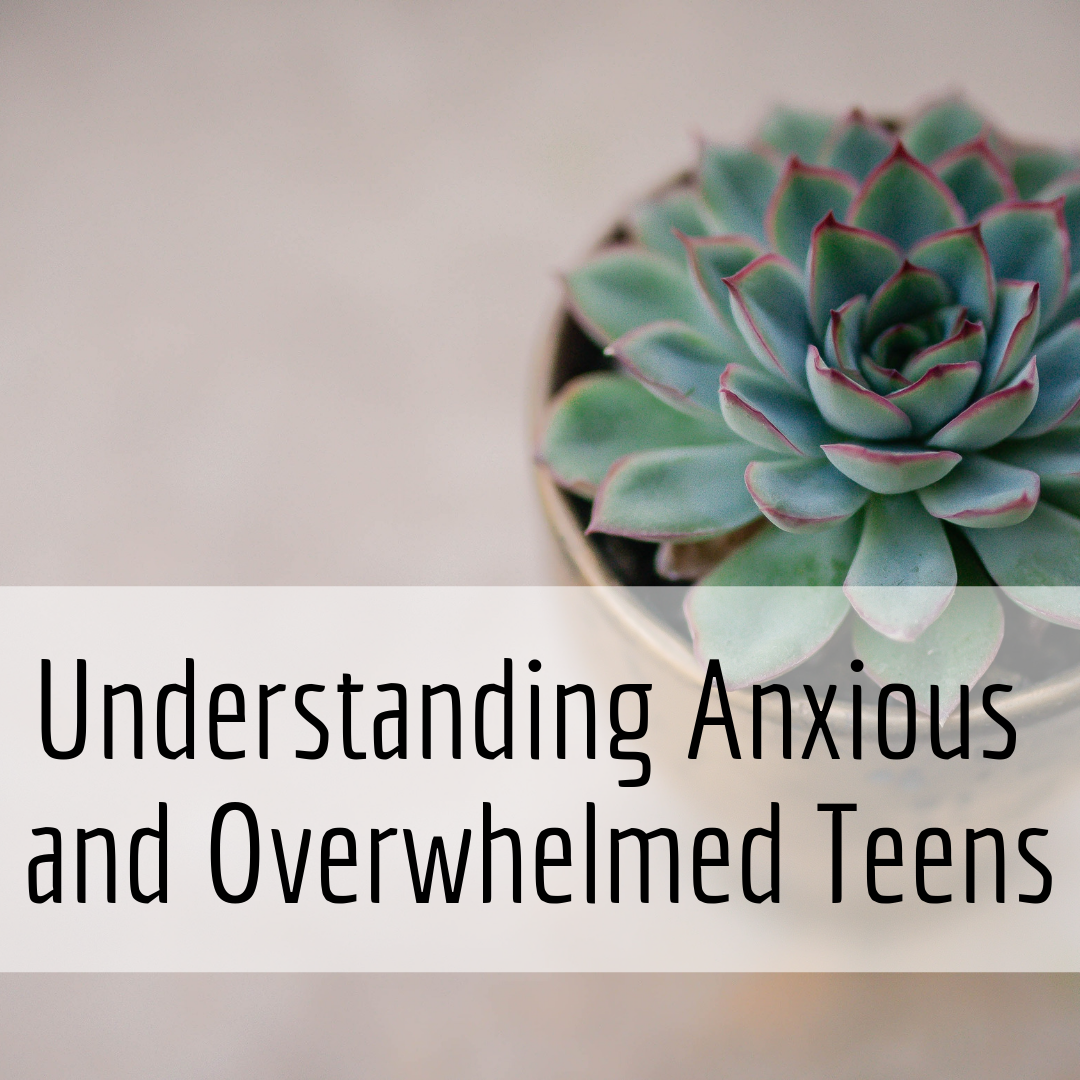
Understanding Anxious and Overwhelmed Teens
Who knows why teens do what they do? Not even they can answer that question. Notwithstanding, as the adults who interact with them—parents, teachers, therapists—we must try. Let us begin by examining the troubling trifecta robbing today’s teens of their happiness.
Puberty and the Brain
The brain experiences a major overhaul during puberty. In fact, it changes as much during adolescence as it does during infancy. The teenage brain has been compared to a sports car with exceptional potential but no brakes installed.
Traditionally, the influx of hormones has been accredited for emotional outbursts, attitudes, and poor decision-making. Puberty triggers such a massive increase in hormonal levels that the brain actually experiences a jolt and becomes overwhelmed. But at the same time, two major components of the brain—the prefrontal cortex and the amygdala—are in the process of being reconfigured as well.
Considered the “thinking” part of the brain, the prefrontal cortex is responsible for problem-solving, decision-making, emotional control, communication, and memory. It is not fully developed until the mid-twenties. The amygdala, known as the “reacting” part of the brain, governs our emotions. Unfortunately, these two parts of the brain are furthest apart during puberty.
This all translates into a flood of hormones pouring into the brain during a period when it is being guided by the “reactive” center with very little input from the “thinking” center. So, the next time your teen wants to wear shorts out when it’s snowing, maybe you’ll understand what led to this decision.
Social Media
While there are undoubtedly positive benefits to social media, we must not ignore the overwhelming control it has over our teens. As a parent or caretaker, you’ve surely observed this yourself: take away that phone and watch the physical and emotional response. Again, this is not their fault. Today’s adolescents have been raised in an electronic world. Even toddlers play with phones, iPads, etc., and many teachers use online sites as a part of their curriculum.
The concern with social media is that teens are missing out on important life lessons and skills as a result of it. They have no problem texting with friends while playing online games but suffer a significant deficit in face-to-face communication. I’ve known teens who could send inappropriate photos through various online applications but were unable to place an order in a restaurant. The world of social media has stolen from adolescents the experience of practicing face-to-face communication and has instead taught them the unhealthy skill of avoidance.
Recalling the biological effects described above, the teenage brain is trying to figure out identity and self-worth. The most devastating result of social media is the constant assessment of self-worth that it creates. Teenagers are looking excessively to Snapchat, Twitter, Facebook, etc., in a phenomenon now known as FOMO: fear of missing out. They are basing their self-worth and on the online presence of their peers.
All of this helps explain the meltdown when phones or electronics are taken away. Teens are left feeling vulnerable and insecure because they are no longer connected to the source of their identity. However, studies show the more time teens spend on social media, the greater the likelihood they will experience depression and anxiety. Again, social media offers plenty of opportunity, but like everything else in life, moderation is key.
Pressure
The last part of the trifecta is pressure. Modern-day society encourages teens to be sprinters before they have even finished training for the race.
Schools have consistently pushed the fast-forward button. Many are teaching 11th-grade material to 8th graders and offer various advanced programs that allow students to graduate early or with an associate’s degree. Some even boast the possibility of attaining a 5.0 GPA. Additionally, sports have transitioned to premiere and competitive at earlier and earlier ages, meaning endless hours of practice and increased pressure to excel, to be “better than the rest.”
Research indicates there has been a shift in responsibility for this pressure. It is no longer parents pushing their kids; teenagers are pushing themselves. This means they have internalized this need to do more, and to do it earlier and better.
This kind of pressure leads to enormous amounts of anxiety. I hear story after story, in my own professional career and from friends and colleagues, about students “sprinting” toward what they envision as success until they hit a wall, where they then crash and burn. Often, these crashes lead to withdrawal and isolation, sometimes to suicidal ideations and attempts, and at times even to a complete loss of self.
What to Do about It
This is a lot of information to absorb, and it’s only the beginning. Biology will not change, the accessibility of social media will not change, and increasing pressure on our teens will not change. However, what can change is our understanding of these issues and how we address and support teens during this difficult journey from childhood to adulthood.
Here are three things you can do right now:
-
Talk with your teenagers. Let them know all the crazy emotions and pressure they are feeling is normal and not “their fault.” Normalize the struggle, but don’t defend irrational behaviors. Open the door for dialogue.
-
Take some control back over use of electronics. I’m not saying go rogue and hide their cell phones. I’m encouraging you to set boundaries. And remember, advice is best taken if you do it yourself as well. Perhaps enforce no phones at the dinner table, or schedule a family game night without phones.
-
Set realistic expectations. Don’t be a part of the pressure that is breaking our teenagers. Give them unconditional love and acceptance. Let them know they are valued regardless of their GPA, athletic success, or the number of friends they have.
Should you decide you want support and guidance, Clarity Counseling offers a wealth of knowledge and experience to help walk you and your overwhelmed, anxious teen through this journey.
References
Gómez-Ortiz, O., Roldán, R., Ortega-Ruiz, R. (2018). Social anxiety and psychosocial adjustments in adolescents: Relation with peer victimization, self-esteem and emotion regulation. Child Indicators Research 11(6): 1719-1736. doi: 10.1007/s12187-017-9506-3
Thornton, S. (2018). Supporting children and young people with anxiety disorders. British Journal of School Nursing 13(3). doi: 10.12968/bjsn.2018.13.3.146
Denizet-Lewis, B. (2017, October 11). Why are more American teenagers than ever suffering from severe anxiety? The New York Times Magazine. Retrieved from https://www.nytimes.com

